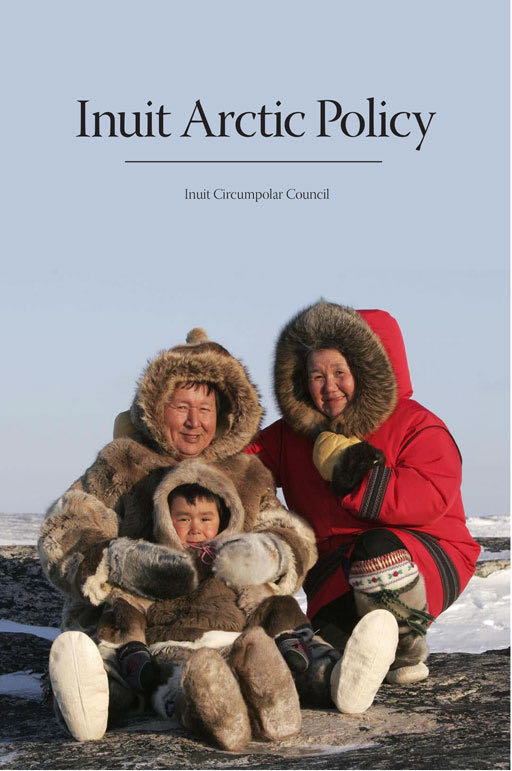
Inuit Arctic Policy
If you look at a globe from on top, you get a surprising view. Inuit own
or have jurisdiction over half the entire Arctic, stretching over half of the
world’s circumference; we are, in fact, the largest landholders in the world.
Yet, we number only about 155,000 in four countries Russia/Chukotka;
US/Alaska; Canada/Inuvialuit Settlement Region, Nunavut, Nunavik,
Nunatsiavut and Denmark/Greenland. The Arctic has been our home
and our sustenance for centuries.
By 2010, Inuit Nunaat, our homeland, has become a major force in
international and national politics, in climate change research and science,
in culture and arts, in minority human rights and models of indigenous
self-government. Arctic Sovereignty is one of our main concerns and is
now also an international concern.
Thirty years ago when the process of formulating a comprehensive Inuit
Arctic Policy began, it was almost a novelty to speak of Inuit rights and
some regarded the first document as unattainable. But people have
underestimated our adaptability and resilience. “We were a rag-tag and
young group of Inuit”, as Mary May Simon, president of Inuit Tapiriit
Kanatami, recently said in a speech, “but we were determined”.
She was right, we were determined to improve our living conditions and
safeguard our land. We are a culturally-anchored people who not only
created principles for a policy but also managed to get many of them
implemented; today many of our early pioneers, who worked so tirelessly,
against almost impossible odds, are distinguished national or international
leaders. In those thirty years, the Inuit world has changed profoundly;
the Inuit Circumpolar Council and its Arctic Policy principles have played
an important role in this development.
However, as we worked to gain our rights nationally and internationally,
it also became apparent that the original Arctic Policy needed revisions
and updating for the Inuit Arctic Policy is a living and evolving document.
This work was entrusted to Aqqaluk Lynge, ICC Greenland and Marianne
Stenbaek, McGill University, Canada. I want to acknowledge them and
express ICC’s gratitude to them for this new edition that I trust will be as
influential as the previous edition.
I would also like to express ICC’s continuing gratitude to Mary May Simon
who originally inspired the Arctic Policy work and worked so hard to make
it a reality. Eben Hopson will always be remembered with gratitude and
devotion as the founder of the Inuit Circumpolar Conference (now Council)
in 1977 in Barrow.
Jim Stotts, Chair
Inuit Circumpolar Council